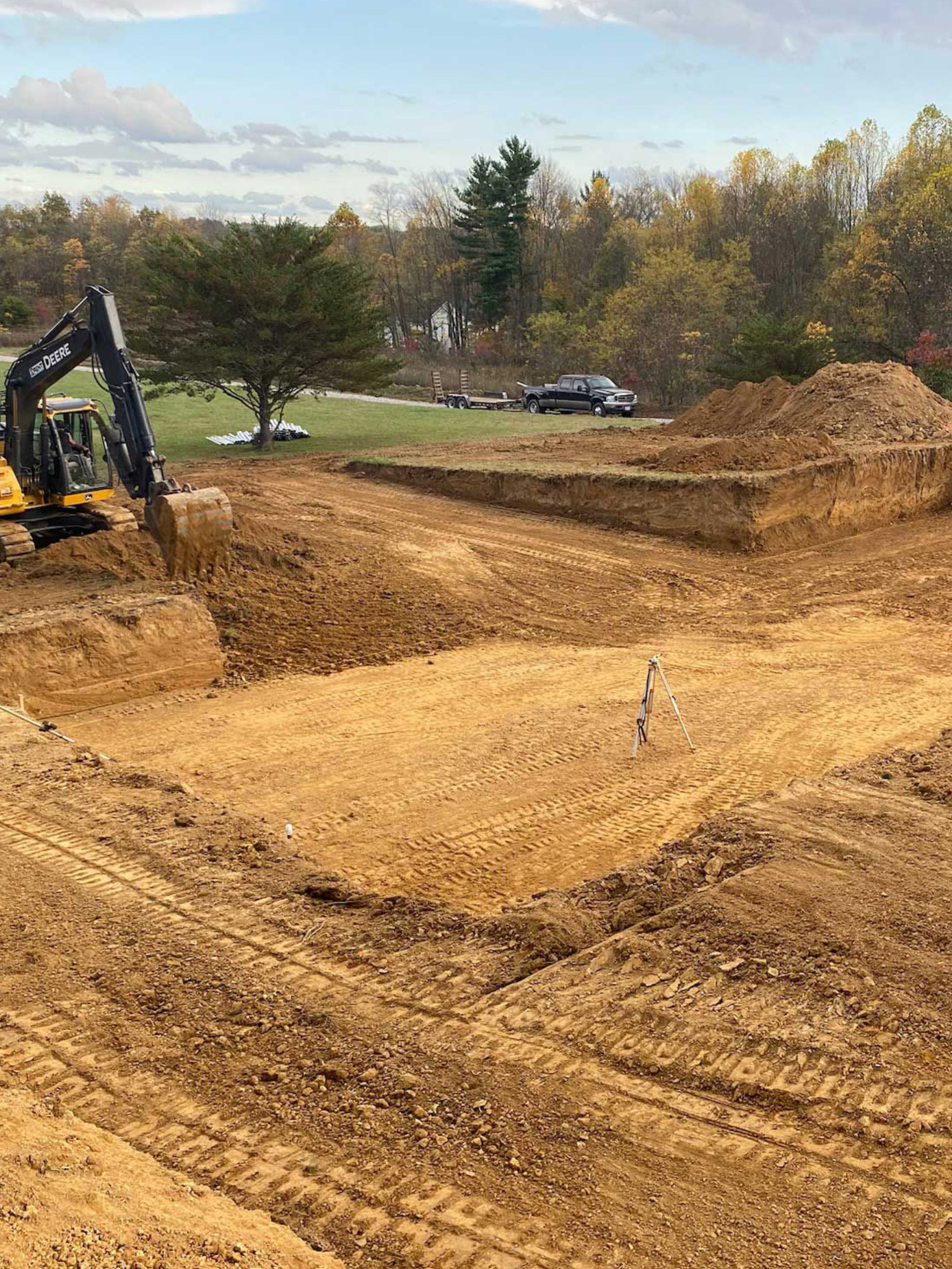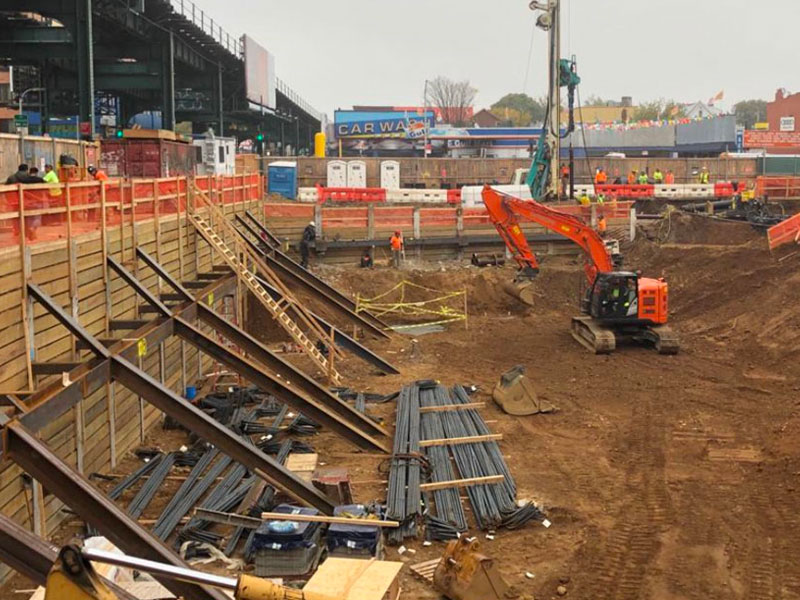Residential Excavating Ohio - Specialized Excavation for Ohio Houses
Wiki Article
Revealing the Art of Excavation: Pro Tips for Safe and Efficient Excavating
As soil is transformed and earth is relocated, the complexities of excavation reveal themselves, requiring an eager understanding of devices, dirt structure, safety methods, and environmental factors to consider. The proficiency required to navigate these components efficiently can suggest the difference in between a successful excavation project and a prospective disaster.Value of Appropriate Tools
To make sure the security and effectiveness of any excavation job, making use of the appropriate equipment is vital. Excavation tasks differ in extent and intricacy, varying from tiny household landscape design work to large-scale construction undertakings.Excavators are essential pieces of equipment in any kind of excavating procedure. These functional devices been available in different dimensions to suit different task needs. Tiny excavators are suitable for smaller jobs, while larger excavators deal with more extensive jobs effectively. Backhoes are one more important equipment kind, incorporating the features of a loader and an excavator in one maker. They are useful for jobs needing adaptability and ability to move.
Bulldozers stand out in jobs that require pressing large amounts of soil or particles. By investing in the proper equipment, excavation jobs can be finished safely, on time, and with accuracy.
Comprehending Soil Composition
A comprehensive understanding of soil make-up is essential for carrying out excavation jobs with precision and security. Recognizing the different sorts of dirt is essential as it straight influences excavation methods, equipment choice, and general task efficiency. Soil structure typically includes four primary parts: sand, silt, clay, and organic matter. Each element has unique homes that affect how soil reacts to excavation procedures.Silt particles are smaller sized than sand however larger than clay, offering modest drain and cohesion. Organic issue, such as decomposing plant material, affects dirt fertility and security.
Before beginning excavation, conducting soil examinations to establish its structure and attributes is necessary. This info assists in selecting the ideal devices, executing precaution, and developing excavation strategies customized to the specific dirt conditions - lancaster trenching. By understanding dirt composition, excavation specialists can improve task results while ensuring safety and security and adherence to best techniques
Precaution and Procedures
Understanding dirt composition is the cornerstone whereupon security measures and methods for excavation jobs are developed, ensuring the health of employees and the success of the venture. When it involves safety and security during excavation, there are several crucial steps that have to be applied to reduce risks and protect against accidents.Primarily, prior to any type of digging starts, a detailed examination of the site must be conducted to identify any type of possible risks such as underground energies, unsteady dirt problems, or neighboring frameworks that can pose a danger. It is essential to have a qualified individual look after the excavation procedure to make certain that all safety methods are followed purely.
Furthermore, all workers entailed in the excavation must be appropriately learnt secure digging methods and the correct operation of equipment. Individual safety tools (PPE) such as difficult hats, high presence clothing, gloves, and security boots ought to be used in all times to minimize the risk of injuries. dump truck companies in ohio. Normal safety and security conferences and toolbox talks should also be carried out to keep all workers notified regarding prospective risks and strengthen secure job techniques. By sticking to these image source precaution and protocols, excavation projects can be completed efficiently and without event.
Effective Excavation Planning
When starting an excavation job, thorough preparation is important to make sure performance, safety and security, and effective end results. Effective excavation planning entails numerous vital steps that are vital for the smooth execution of the project. The primary step is to conduct a thorough website evaluation to identify any kind of prospective hazards, such as below ground utilities or unpredictable dirt conditions. This details is important for creating an in-depth excavation plan that consists of security measures and take the chance of reduction methods.Once the website analysis is total, the following step is to produce a clear timeline and schedule for the excavation tasks. This consists of identifying the series of tasks, devices needs, and manpower allowance. Correct scheduling assists stay clear of delays and guarantees that the task remains on track.

Furthermore, communication among all employee is paramount during the her latest blog planning phase. Clear instructions, regular updates, and effective sychronisation are necessary for an effective excavation task. By investing time and effort in precise preparation, excavation groups can dramatically enhance productivity, reduce dangers, and accomplish effective end results.

Taking Care Of Ecological Considerations
With increasing focus on environmental sustainability in building and construction methods, managing environmental factors to consider has become an essential aspect of excavation tasks. Excavation tasks have the possible to impact the surrounding setting through soil disintegration, sediment drainage, habitat disruption, and contamination of water sources. To minimize these risks, it is vital to apply ideal practices that focus on ecological defense.
Additionally, appropriate waste administration is critical to avoid dirt and water contamination. Applying procedures for the disposal of hazardous materials, recycling of waste products, and lessening making use of hazardous chemicals can considerably lower the environmental impact of excavation projects. By incorporating these methods right into excavation planning and execution, construction business can ensure that their tasks are not only risk-free and productive however likewise eco accountable.
Conclusion
In conclusion, understanding the art of excavation requires a detailed understanding of proper devices, dirt make-up, safety actions, and reliable planning. By following these guidelines and thinking about environmental variables, excavations can be performed securely and effectively. It is essential to prioritize safety and productivity in every excavating job to make sure successful outcomes.As soil is transformed and planet is moved, the complexities of excavation reveal themselves, demanding an eager understanding of equipment, dirt make-up, safety procedures, and environmental factors to consider.To guarantee the safety and security and performance of any type of excavation task, making use of the appropriate equipment is extremely important.An extensive understanding of dirt make-up is fundamental for implementing excavation tasks with precision and safety. Recognizing the different types of dirt is important as it straight impacts excavation methods, equipment choice, and overall project performance. By understanding dirt make-up, excavation specialists can improve project results while making certain security and adherence to ideal methods.
Report this wiki page